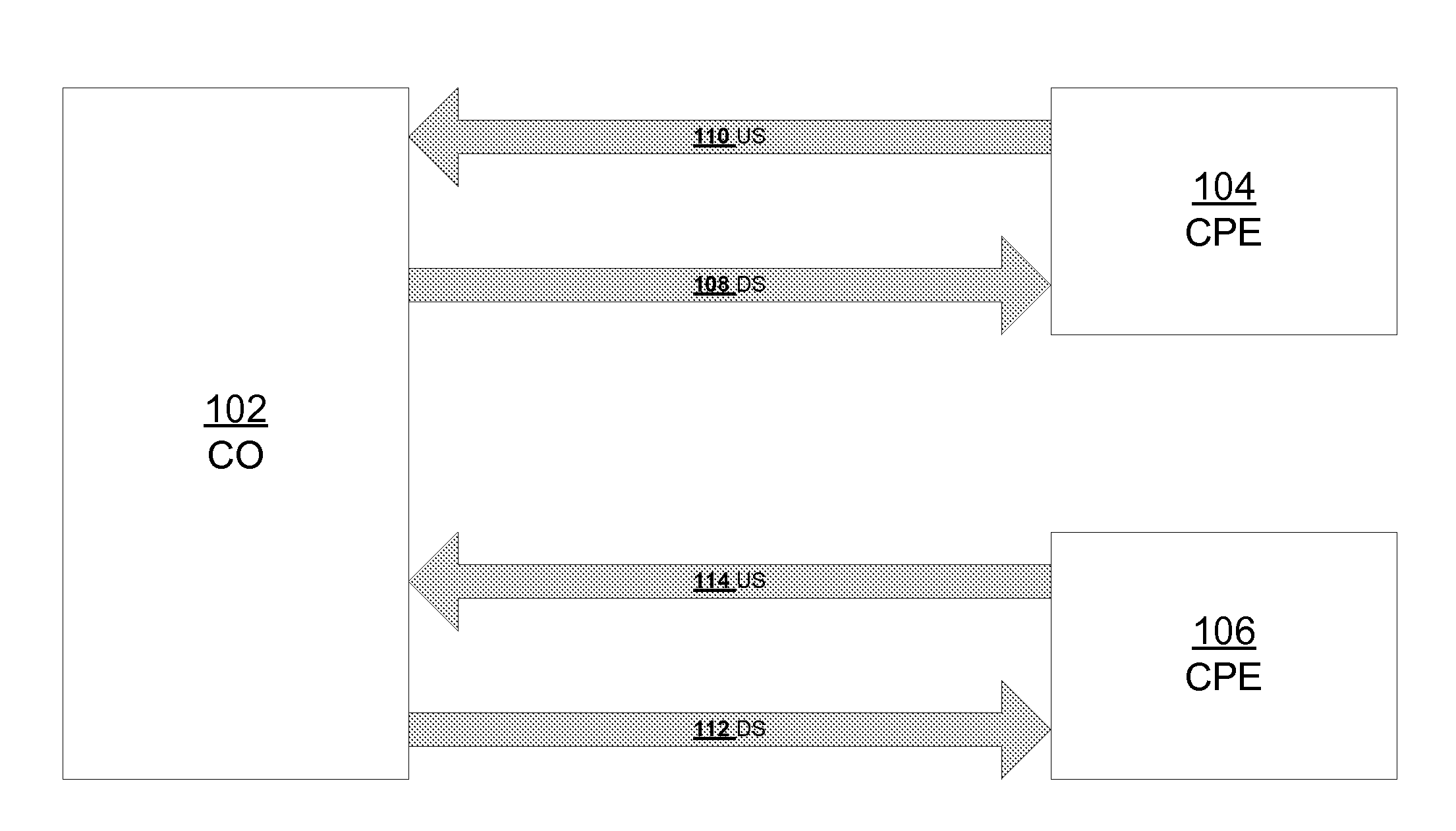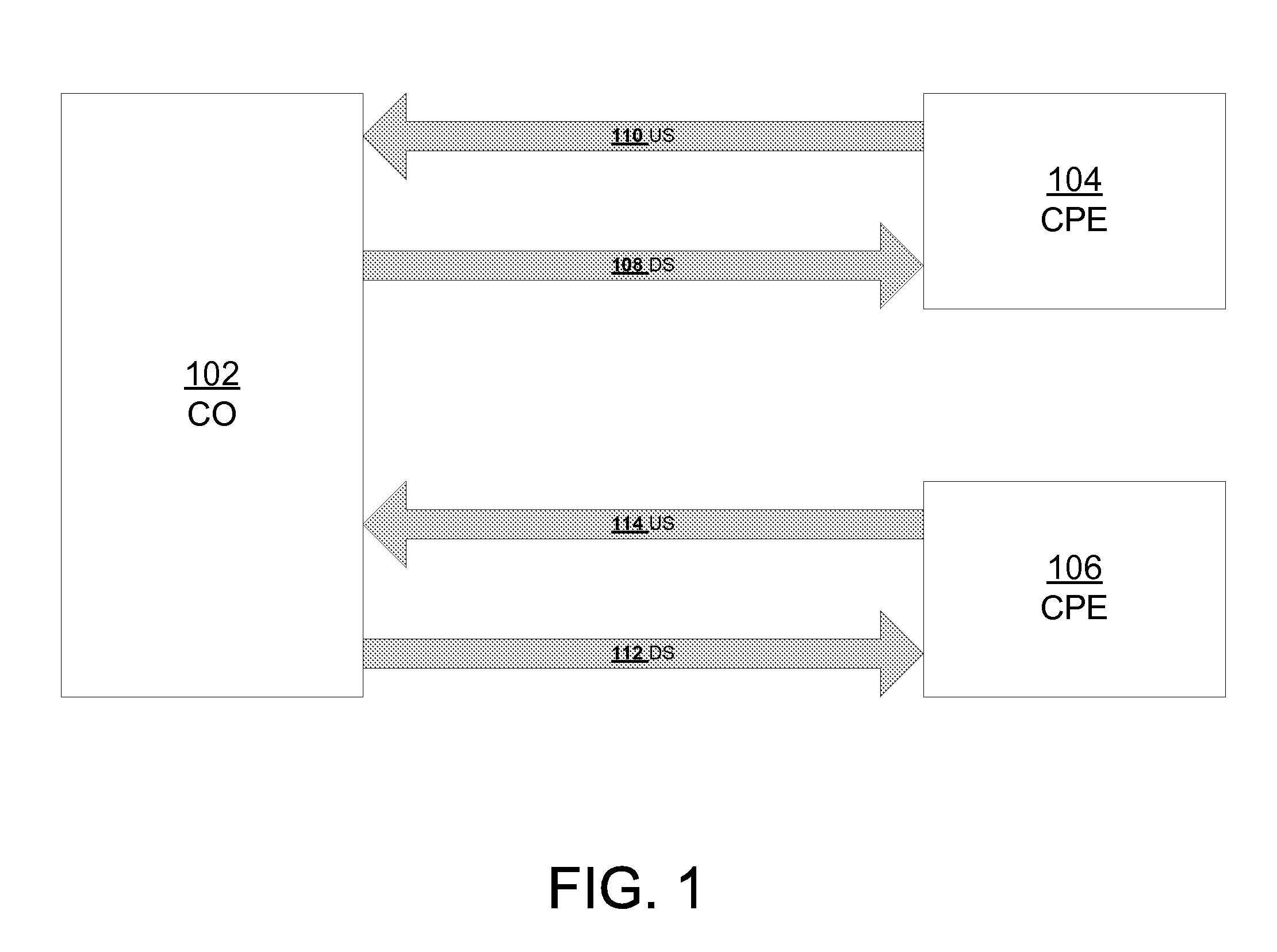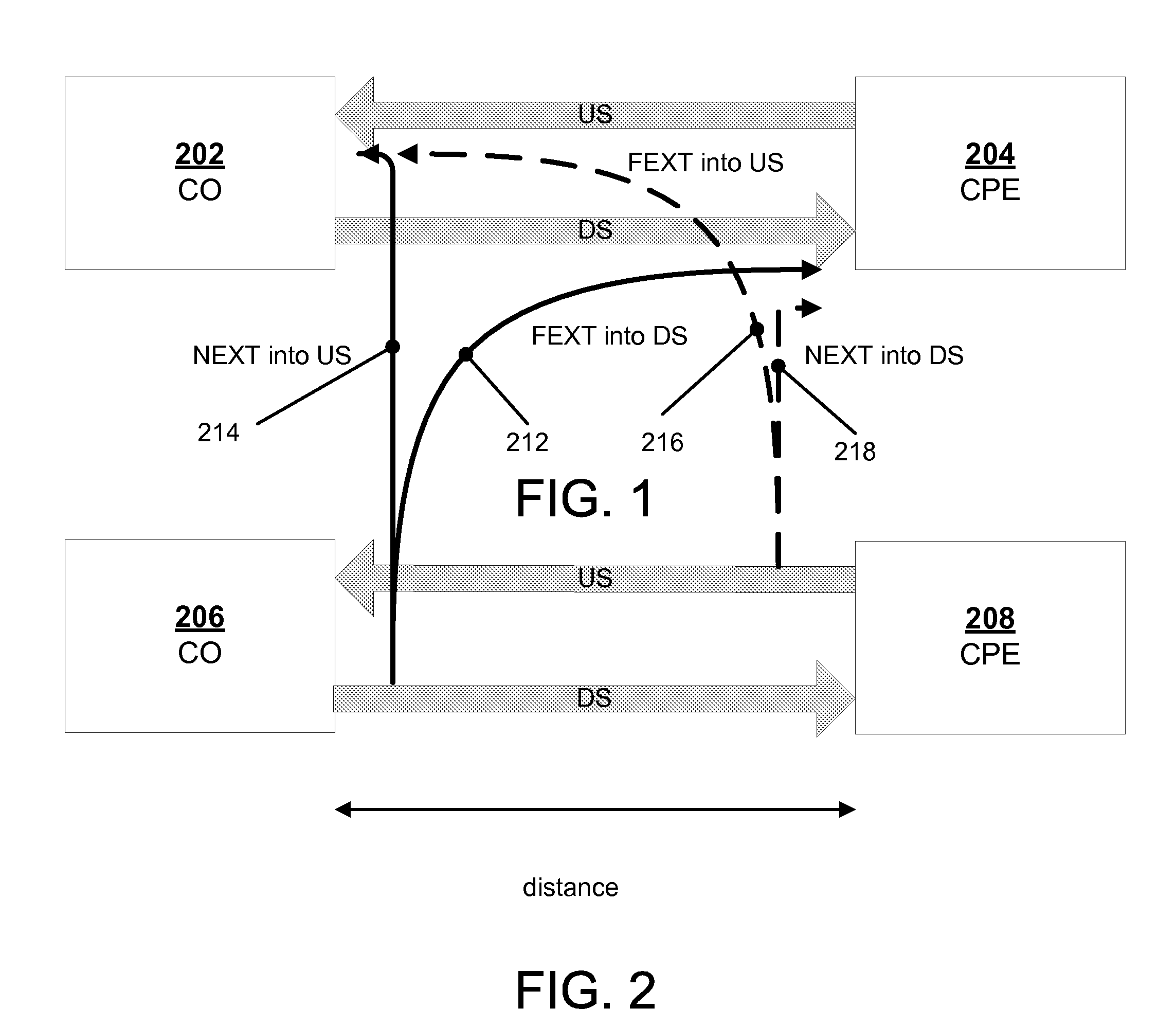Crosstalk Recognition in Presence of Radio Frequency Interference
a radio frequency interference and crosstalk technology, applied in the field of digital subscriber line (xdsl) communications, can solve the problems of unsatisfactory effect or interference, crosstalk interference by adjacent pairs is one of the major performance limiting factors, and the available lower bandwidth of the upstream channel might be severely affected, so as to eliminate background noise
- Summary
- Abstract
- Description
- Claims
- Application Information
AI Technical Summary
Benefits of technology
Problems solved by technology
Method used
Image
Examples
Embodiment Construction
[0026]A detailed description of embodiments of the present invention is presented below. While the disclosure will be described in connection with these drawings, there is no intent to limit it to the embodiment or embodiments disclosed herein. On the contrary, the intent is to cover all alternatives, modifications and equivalents included within the spirit and scope of the disclosure as defined by the appended claims.
[0027]While the standards provide the acquisition of various measurements during loop testing. These measurements in raw form are of limited use in addressing crosstalk issues. One useful piece of meaningful information is the service type of any dominant crosstalk disturber. For example, if the service type of the dominant crosstalk disturber is identified, the service provider could dispatch technicians or other personnel to investigate the equipment causing the crosstalk and possibly correct the problem. Furthermore, the classification of service type can aid in the...
PUM
 Login to View More
Login to View More Abstract
Description
Claims
Application Information
 Login to View More
Login to View More - R&D
- Intellectual Property
- Life Sciences
- Materials
- Tech Scout
- Unparalleled Data Quality
- Higher Quality Content
- 60% Fewer Hallucinations
Browse by: Latest US Patents, China's latest patents, Technical Efficacy Thesaurus, Application Domain, Technology Topic, Popular Technical Reports.
© 2025 PatSnap. All rights reserved.Legal|Privacy policy|Modern Slavery Act Transparency Statement|Sitemap|About US| Contact US: help@patsnap.com



